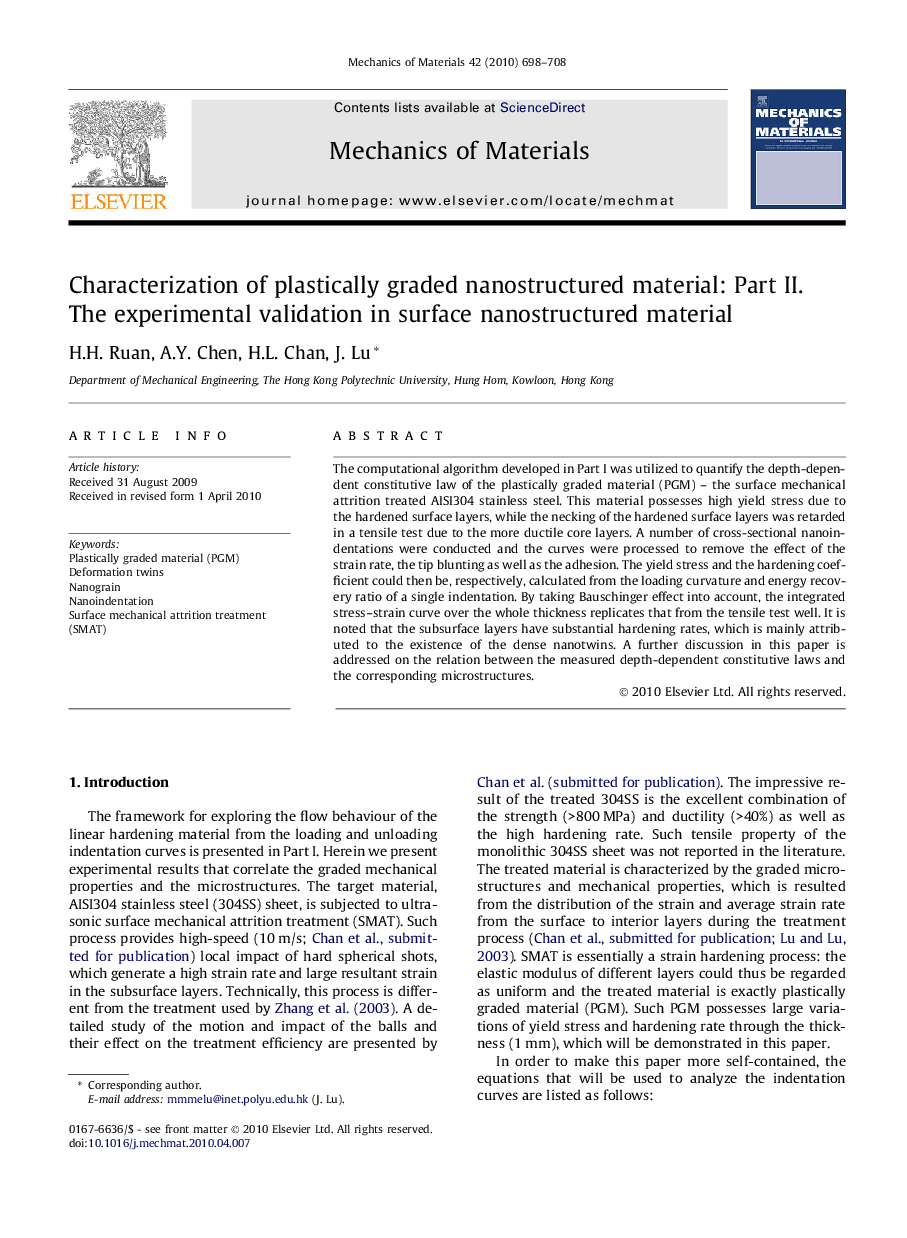| Article ID | Journal | Published Year | Pages | File Type |
|---|---|---|---|---|
| 800475 | Mechanics of Materials | 2010 | 11 Pages |
The computational algorithm developed in Part I was utilized to quantify the depth-dependent constitutive law of the plastically graded material (PGM) – the surface mechanical attrition treated AISI304 stainless steel. This material possesses high yield stress due to the hardened surface layers, while the necking of the hardened surface layers was retarded in a tensile test due to the more ductile core layers. A number of cross-sectional nanoindentations were conducted and the curves were processed to remove the effect of the strain rate, the tip blunting as well as the adhesion. The yield stress and the hardening coefficient could then be, respectively, calculated from the loading curvature and energy recovery ratio of a single indentation. By taking Bauschinger effect into account, the integrated stress–strain curve over the whole thickness replicates that from the tensile test well. It is noted that the subsurface layers have substantial hardening rates, which is mainly attributed to the existence of the dense nanotwins. A further discussion in this paper is addressed on the relation between the measured depth-dependent constitutive laws and the corresponding microstructures.
